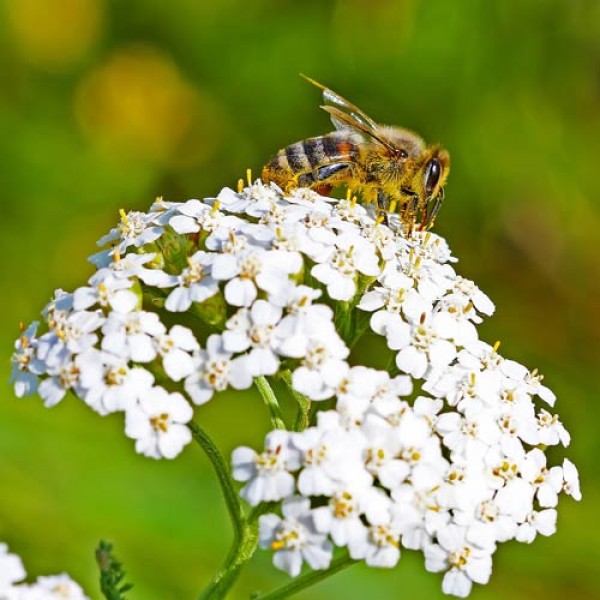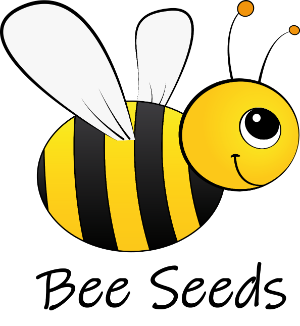
Yarrow - Perennial of the Year 2021
Undemanding beauty with great healing power
In 2004, yarrow was already named medicinal plant of the year in Germany. In 2021, the Association of German Perennial Gardeners focused its attention on this heat-resistant beauty with healing properties. Previously defamed as a "weed", today it should not be missing from any natural, bee-friendly garden.
The best known variety is, of course, the common yarrow (Achillea millefolium), which can be found in many meadows, on roadsides and field margins. This white-flowered composite is popular with many insects and especially with bees. However, there is also a wide range of white, orange, red, yellow and pink ornamental forms for the garden that are equally good bee plants. These are often cushion perennials, but they need to be divided every three to four years in order to keep them flowering.
Healing properties
Yarrow has been an edible wild plant since ancient times and is an important medicinal herb. It is called Achillea because, according to legend, the Greek hero Achilles used yarrow to heal his wounds. Its name in folk medicine "warrior plant" indicates that this property has been known for centuries. Its aromatic bitter substances with bile-promoting and antispasmodic properties also help with digestive disorders. Yarrow is used in gynaecology because it regulates menstruation and has antispasmodic and haemostatic properties.
Location
Yarrow is undemanding and likes a sunny, dry spot. It is resistant to drought, heat and cold and also does well in poor soil, generally it needs a well-drained soil. Especially in view of the increasingly dry and hot summers, it is a good alternative for the garden. Due to its creeping roots, it is also a soil stabiliser and a pioneer plant.
Sowing
Sow the seeds from April to May outdoors in normal soil. The seeds should just barely be covered by the soil. You can also spread it in the lawn, yarrow is tread-resistant, but you should not mow too often so that the flowers have time to develop.
Care
The common white yarrow needs little care. It doesn`t need to be fertilized and only needs to be watered during times of severe drought. The cultivated varieties need fresh, well-drained soil and a little compost now and then. Do not water too much, as yarrow avoids damp sites that are too nutrient-rich. For perennials that flower for a long time, it is advisable to divide the plants every three to four years.
Flowering
The first flower appears in June. If the withered flower heads are removed regularly, it will produce a second flower in September. If you then leave the withered inflorescences, you support many insects that find winter quarters in the dry shoots.
Harvest
The flowering plants are harvested as medicinal herbs. To do this, cut the plants in the midday heat, since this is the time with the highest content of essential oils. The harvested herb can be tied into bunches and hung up to dry or laid out in a thin layer to dry. You can also make a tincture from the fresh herb with alcohol.
In the kitchen, the fresh leaves can be used to flavour soups, salads, herb curds and sauces. They taste very aromatic and distinct, but not unpleasantly bitter.












